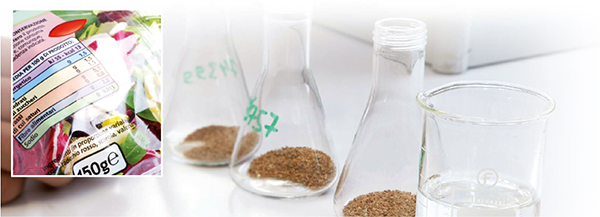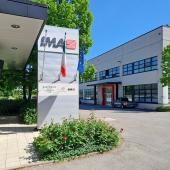MOCA compliance: data sheets on the way
CAST 2 project: guidelines are ready to support documentation for declarations of compliance for food contact, with two new chapters on inks and glues. This was announced by the Italian National Institute for Health (ISS) in a recent conference organized by the Istituto Italiano Imballaggio.
Introducing the meeting that took place, as indeed befitting, in conjunction with the World Food Day and related events, the spokesperson of the Società Umanitaria - charitable trust and promoter of culture that has inherited the walls and cloisters of the century convent masked by the huge gray mass of the Milan court buildings, declared: «This beautifully frescoed hall was once the refectory of the Franciscan Monks». What location could be better suited to host a conference on the reduction of food waste?
The meeting was what is more highly technical that, in spite of the problems of traffic generated by the the 53 Heads of State Asem summit held in Milan that day, saw the great Renaissance hall filled with experts and practitioners who, in companies, district health units and in Universities, deal with food safety every day.

Contents for Expo. Organized by the Istituto Italiano Imballaggio and entitled “Food packaging: food safety and the reduction of food waste”, the conference was held on October 17 as part of the third “International Innovation, Research and Food Safety Event” organized by the Umanitaria as a contribution to Expo 2015. And certainly also the contribution of the Istituto, as expressed at the outset of the proceedings by its director Marco Sachet, «that conceived the conference is as part of a larger design currently under development, consistent with and complementary to the objectives of Expo, which aims at sensitizing public awareness and that of practitioners and operators as to how decisive packaging can be in avoiding food wastage along the entire value chain».
In this context the CAST project assumes a highly special significance, as well as being a unique and original contribution made by Italy, to the point where the representatives of the Italian National Institute for Health, that heads the project, have been invited several times to illustrate assumptions, methodologies and contents by both the European institutions and similar bodies in the United States.
The October conference witnessed the presentation of the latest major developments.
CAST Guidelines: the new features. In the two sessions that made up the morning, Maria Rosaria Milana of the Italian National Institute for Health (ISS) and other authoritative speakers, “moderated” by Roberto La Pira (director of “ilfattoalimentare.it”), updated on the guidelines for supporting documentation to the MOCA the statements of compliance and on the role of packaging in the reduction of food waste.
Dottoressa Milana was obviously tasked with submitting new documents. Like the general Guidelines, they are structured into chapters dedicated to individual articles and materials (aluminum, paper and carton, flexible packaging, plastics, wood, metals and alloys, coated and uncoated, cork, glass... with two important additions immediately disclosed below). Moreover, they are formulated on the basis of a general model shared and declined in a series of separate procedures according to the characteristics of each type of material, achieving that difficult “squaring of the circle” that holds together both affinities and differences.
Indispensable worktool, the new data sheets (available at the start of 2015) are proposed as a guide for companies for drawing up the documents certifying compliance with the rules on food contact, but also to the technical aspects of the ASL to help them carry out correct verification. Two new chapters have also been added to the materials of the original list, dedicated to those fundamental elements of packaging that are inks and sealants.
As Dottoressa Milana once again reiterated – these are not mandatory procedures, but merely recommendations: There are certainly other ways of achieving the same results, but the Guidelines provide one of the safest routes. And she concluded her talk with an invitation: The Guidelines are an open document and hence everyone is encouraged to submit additions and suggestions.
A complex topic. During the conference organized by the Istituto Italiano Imballaggio two ASL district health authority representatives took their turn in speaking, bearing witness the complexity of the problem. Their interventions provided glimpses of the real economy, such as stressing the need to carry out more specific controls where one might expect a waiving of the standards (typically on goods imported from China and adjoining areas) «to not only protect consumers but also to protect the Italian food industry»(Davide Bordonaro ASL Novara); or speaking of the difficulties, especially for micro enterprises, in understanding exactly what the law demands and interpreting the relevant documents (Ambrogio Pagani ASL 2 Tuscany). With a typically Tuscan verve, much appreciated by the audience, Pagani made a twofold appeal: In order to ensure food safety, performing the task of carrying out stringent controls well does not suffice; one also needs a systematic application of the rules (and any subsequent audits as well) and hence these also have to be understandable. Like that declaration of conformity that every dealer knows he possesses, without having any idea as to its contents.
In the second conference session Luca Fasciani of the University of Bologna documented the many ways how waste arises, mostly created by unaware human intervention, then going on to make a rundown of packaging technologies already available to avoid the most detrimental behavior.
Luciano Piergiovanni of Distam, Milan, after doing a bit of tidying up on the real extent of the various factors that contribute to food waste, cited several recent international studies on salient aspects of packaging “which can really do a lot to help”, typically active and so-called intelligent packaging.
There are many causes leading to the squandering of resources, said the professor, among which we often forget to mention the economic entities that have an interest in generating excess food (which then gets thrown away) in the First World, or some badly applied rules such as the interpretation of the “expiration date” that leads us to discard what is still wholesome.
But if packaging does not appear at the top of the list - added Piergiovanni - this still does not belie the fact that much yet needs to be done to improve it. He concluded with a theme dear to him: in order to progress we need the cooperation of scientists who, with different specialties, operate along the entire supply chain.
Just as has been done to develop the project CAST.
CAST - Contatto Alimentare Sicurezza e Tecnologia
The CAST Project was founded in 2007 with the aim of approaching the issue of food safety in an integrated manner and with a focus on Materials and Articles in Contact with Food (MOCA).
But “cast” in English also means “melting”. This project, in fact, born with collaborative intent and tends to blend the skills of public and private stakeholders in order to:
- standardize the interpretation of the wording of the legislation;
- improve the technical application of the rules;
- identify shared methods of approach to food safety, as well as technical solutions that constitute a common heritage of Industry Associations and public bodies working in the field;
- make more efficient the transmission and the information along the supply chain.
Participants in the CAST project: AIDEPI, Aiipa, Aipe, Anfima, Assocarta, Assocomaplast, Assografici, Assografici-Gifco, Assografici-Giflex Assoimballaggi/FederlegnoArredo, Assomet, Assorimap, Assovetro, Centroal, Cial, Centre for Information on PVC, ConLegno, Federalimentare, Federchimica-Avisa, Federazione Gomma Plastica-Unionplast Federchimica Plastics Europe-Italia, Istituto Italiano Imballaggio (contracting party), Istituto Superiore di Sanità (Scientific Coordinator).

















